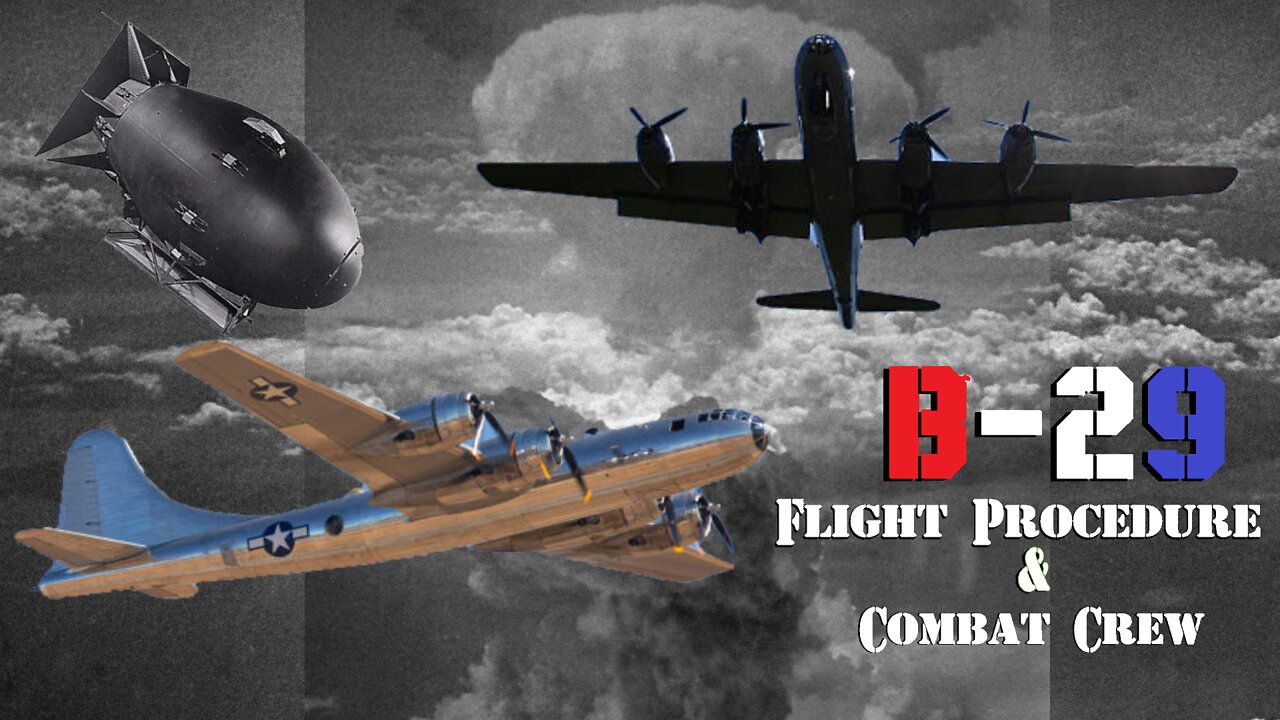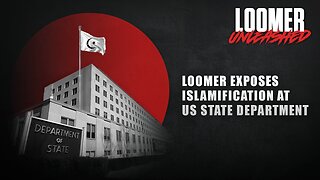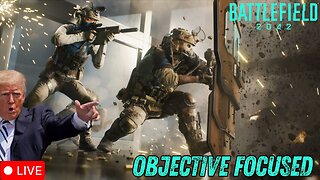Premium Only Content

Boeing B-29 Superfortress
We are a Public Domain sharing community,with a focus on American life pre-1970's..
These videos are for Historic and Cultural preservation. See something interesting?
We encourage viewers to add comments and, especially, to provide additional
information about our videos by adding a comment!
The Boeing B-29 Superfortress is an American four-engined propeller-driven heavy bomber, designed by Boeing and flown primarily by the United States during World War II and the Korean War. Named in allusion to its predecessor, the B-17 Flying Fortress, the Superfortress was designed for high-altitude strategic bombing, but also excelled in low-altitude night incendiary bombing, and in dropping naval mines to blockade Japan. B-29s dropped the atomic bombs on Hiroshima and Nagasaki, the only aircraft ever to drop nuclear weapons in combat.
One of the largest aircraft of World War II, the B-29 was designed with state-of-the-art technology, which included a pressurized cabin, dual-wheeled tricycle landing gear, and an analog computer-controlled fire-control system that allowed one gunner and a fire-control officer to direct four remote machine gun turrets. The $3 billion cost of design and production (equivalent to $45 billion today),[3] far exceeding the $1.9 billion cost of the Manhattan Project, made the B-29 program the most expensive of the war.[4][5] The B-29's advanced design allowed it to remain in service in various roles throughout the 1950s. The type was retired in the early 1960s, after 3,970 of them had been built. A few were also used as flying television transmitters by the Stratovision company. The Royal Air Force flew the B-29 as the Washington until 1954.
The B-29 was the progenitor of a series of Boeing-built bombers, transports, tankers, reconnaissance aircraft, and trainers. For example, the re-engined B-50 Superfortress Lucky Lady II became the first aircraft to fly around the world non-stop, during a 94-hour flight in 1949. The Boeing C-97 Stratofreighter airlifter, which was first flown in 1944, was followed in 1947 by its commercial airliner variant, the Boeing Model 377 Stratocruiser. This bomber-to-airliner derivation was similar to the B-17/Model 307 evolution. In 1948, Boeing introduced the KB-29 tanker, followed in 1950 by the Model 377-derivative KC-97. A line of outsized-cargo variants of the Stratocruiser is the Guppy / Mini Guppy / Super Guppy, which remain in service with NASA and other operators. The Soviet Union produced 847 Tupolev Tu-4s, an unlicensed reverse-engineered copy of the B-29. Twenty B-29s remain as static displays, but only two, FIFI and Doc, still fly.
American Media Ephemera
Truth Social
@AmericanMediaEphemera
#ephemera #educational #culture #knowledge #news
#lifestyle #makesocialmediafunagain #Aviation #flying #warplane #truth
#socialguidance #Religion #conservative #rights #combat #airplane #training
#Republican #DIY #elections #miltary #guns
-
 LIVE
LIVE
Laura Loomer
4 hours agoEP140: Loomer EXPOSES Islamification At US State Department
157 watching -
 3:05:00
3:05:00
TimcastIRL
4 hours agoTrump Floats Accepting 600,000 Chinese Student Visas, MAGA Uproar | Timcast IRL
182K101 -
 8:44:47
8:44:47
SpartakusLIVE
10 hours ago$20,000 Hide and Seek Tourney w/ Stonemountain64 || #1 Rat wins the BIG CHEESE
57K -
 2:34:02
2:34:02
Barry Cunningham
5 hours agoLISA COOK | ADAM SCHIFF | LETITIA JAMES | ARE THEY BEING SACRIFICED BY THE DEEP STATE?
79.6K44 -
 1:36:19
1:36:19
Flyover Conservatives
13 hours agoOnly 17% of Millennials Hit These 5 Adult Milestones—Why?; What If Childhood Trauma Is Behind Your Health Problems? - Dr. Troy Spurrill | FOC Show
26.5K3 -
 4:49:04
4:49:04
HogansAlleyHero
15 hours ago💥CHASING DOPAMINE💥✅TRUMP SAYS BATTLEFIELD IS THE BEST✅
33.9K1 -
 1:57:40
1:57:40
MattMorseTV
6 hours ago $10.57 earned🔴Trump just SHATTERED the PROJECTIONS.🔴
48.9K35 -
 2:32:19
2:32:19
megimu32
4 hours agoOTS: From Star Search to Superstardom
34.9K4 -
 1:56:21
1:56:21
Joker Effect
3 hours agoInterviewing GREENMAN! Looks like he is coming to Rumble! Let's give him a warm welcome! REAL TALENT
21K1 -
 1:07:21
1:07:21
Anthony Rogers
10 hours agoEpisode 380 - Is Pain All In Your Head?
14.6K3